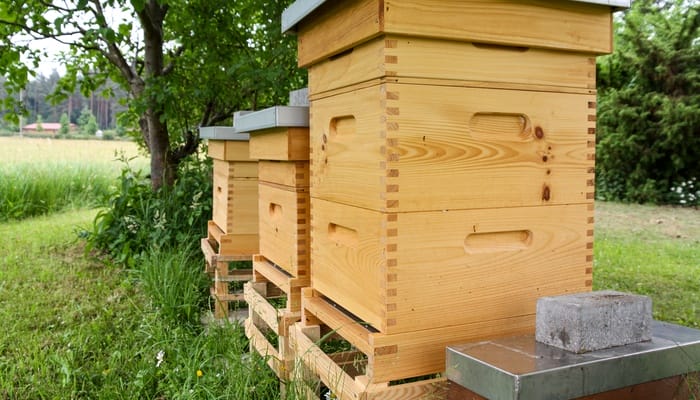Beekeeping is a blend of craft and science, requiring knowledge of tools like the bee super. For people who are unfamiliar, a bee super is a box-like structure that sits above the brood chamber in a hive.
Beekeepers use supers to expand hive capacity and facilitate the storage of surplus honey. But their significance extends far beyond storage. Take note of these fascinating facts about bee supers and their purposes to appreciate bees and honey in a new way.
Honey Supers Play a Vital Role in Honey Storage
Supers act as the primary storage centers for surplus honey within a hive. While the lower chambers house brood and food reserves critical for the colony’s immediate survival, the super is where bees store the extra honey they produce during productive seasons. This allows beekeepers to harvest honey without depriving the colony.
When nectar flow intensifies during spring and summer, supers give bees the additional space they need to increase honey production. This surplus honey becomes the reward for the meticulous care and management provided by the beekeeper.
When To Add or Remove a Super: Getting It Right
Timing plays a significant role in beekeeping, especially when managing honey supers. The 7/10 rule in beekeeping is a handy method to determine when to add or remove a super. When about seven out of every ten frames in a super are filled with honey or being actively worked on by bees, the beekeeper should consider adding the next super.
This prevents overcrowding while giving the colony more room to store honey. Similarly, once the season shifts and nectar flow slows, filled supers are removed to reduce a hive’s workload, which helps the colony focus on its winter preparations.
There’s a Super for Every Purpose
Did you know that bee supers come in different sizes and serve specific purposes? The most common types include shallow, medium, and deep supers. Shallow supers are lightweight and easier to handle, making them ideal for harvesters. Medium supers are versatile, often doubling as brood chambers in certain setups.
In contrast, deep supers are typically best in the lower hive to hold brood and larger quantities of pollen and honey. Beekeepers select their super type based on their goals, from honey production to hive expansion.
Enhance Hive Health With Supers
Bee supers play a pivotal role in maintaining overall hive health. Supers prevent overcrowding, a common problem that can lead to swarming, where a portion of the colony leaves to establish a new hive. By proactively using supers to provide extra space, beekeepers reduce stress within the colony.
A well-managed hive stays productive and resilient, ensuring the bees have better access to resources while staying protected from unnecessary disruptions. Additionally, the use of supers supports pest management efforts and keeps hive invaders like wax moths at bay.
Bee supers are versatile tools and a core element of any successful beekeeping practice. They facilitate honey storage, assist in hive management, and ensure long-term colony health through strategic use. Whether you’re new to beekeeping or a seasoned professional, understanding their purpose can elevate your ability to care for your bees while improving their productivity. 2







